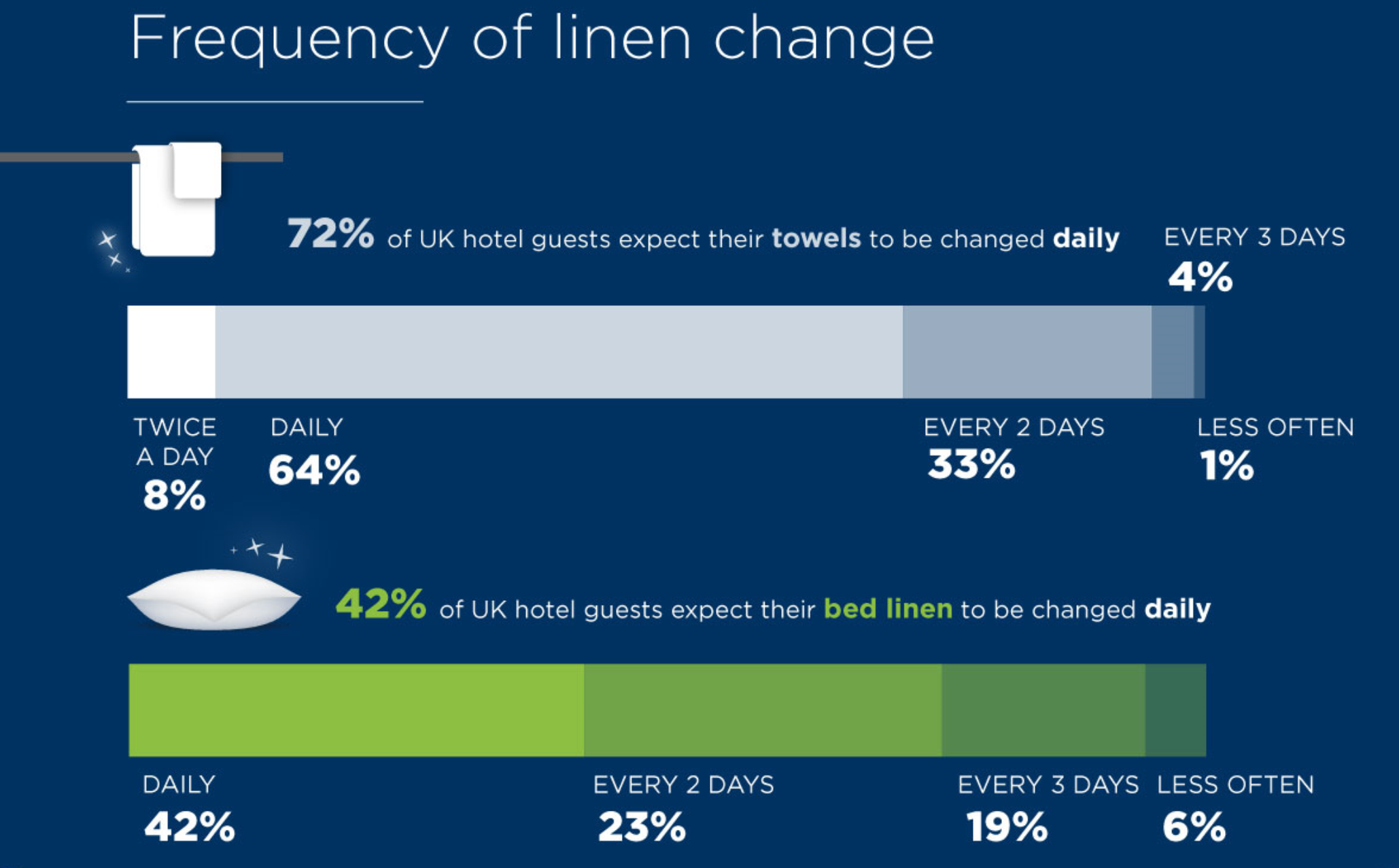When bosses at laundry company Berendsen UK say their biggest challenge is “speed of cycle”, they’re not referring to the giant washing machines they fill with one million bed sheets, pillowcases, tablecloths, napkins and towels every day.
The firm collects dirty items from hotel chains, hospitals, restaurants and other establishments, takes them back to one of 90 sites across the UK, cleans them and sends them back out to be used again on beds, tables and in bathrooms.
Unlike a manufacturing business, which sees raw materials arrive on site, transformed into finished product and shipped out to customers, never to be seen again, Berendsen UK’s business is far more cyclical, says IT director Duncan Macmillan.
“The big difference with us is that, at any one time, much of our inventory might be sitting in customers’ linen cupboards or being used by them, rather than sitting in our own premises – but eventually, it all comes back to us again,” he explains.
“And once it does, we’re under pressure to process it quickly and in the right quantities, so that we’re ready to meet customers’ demands for fresh linen.”
This makes it vital that Berendsen UK has complete visibility into where items are, what state they’re in and when they’ll be needed again. In the past, says Macmillan, “keeping tabs on all that was pretty difficult”.
But it’s a challenge the company has now got to grips with, thanks to advances in radio-frequency identification (RFID) microchips and the use of the Microsoft Azure cloud to store and analyse the data they generate.
Here’s how it works: each item of linen contains an RFID tag. When it arrives at a Berendsen UK site for laundry, it is typically held in a giant rollcage with up to 1,000 similar items. The rollcage is pushed through a large arch-shaped scanner – similar to those found in security areas at airports, Macmillan explained.

These scanners read and log every RFID tag on every item in the rollcage, and that data is sent to the Microsoft Azure cloud for processing in Azure HDInsight, the big data analysis stack based on Hadoop, via the Microsoft Internet of Things (IoT) Hub.
Smaller items of higher value, such as personal clothing belonging to care home residents, may be scanned on a desktop scanner, but the data transfer process is the same. And that data is pretty big: around 20 files are sent by Berendsen to Azure every minute.
In other words, what Berendsen has undertaken is basically a big-data-driven IoT project, but one in which the “things” are not smart fridges or industrial sensors on a utilities network, but “intelligent” bedsheets, pillowcases, hand towels and so on.
It’s only recently become possible to make laundry items “smart” in this way, through the use of tagging that identifies them and their location. While Berendsen UK has used RFID tags before on high-value items, it’s now possible to apply tagging at scale and in large volumes, Macmillan says.
That’s due to the falling cost of individual tags, which is now in the region of “pennies rather than pounds”, and to new levels of durability, which make them robust enough to withstand being washed hundreds of times. “We just had to wait a while for the technology to catch up,” he says.
“At the very least, an RFID tag has to outlast the item of laundry to which it is attached, and one of the big differences between domestic and industrial laundry is that we don’t use dryers. We use industrial presses that exert around 60 tons of pressure on bedsheets and so on, to squeeze the water out, so a tag has to be pretty robust to withstand that kind of treatment on a regular basis.”
While Microsoft’s cloud provides a way for Berendsen to store and process the data generated by one million tags – and growing – in a cost-effective way, the laundry firm also needed a way to turn this information into something its staff can use.
Data collected in Azure is fed back to workers at Berendsen’s UK sites in the form of PowerBI-based dashboards. These provide a simple at-a-glance reference point, featuring pie charts and traffic-light alerts, that shows how that laundry is performing compared with its targets for the day.
Macmillan says: “The sorts of measures we give our operational people are the ones they live and breathe every day, but this is a better, faster and, crucially, more accurate, way to provide them with that information. An ops manager can see straight away, for example, that the laundry has collected 80,000 items that morning, has so far processed 40,000 of them, but still needs to send out 100,000 items that afternoon.”
While operational data is the main focus of this set-up, which was implemented on Berendsen UK’s behalf by Microsoft partner eBECS, it’s also a good source of management information, too, Macmillan adds.
“As a company, we’ve now got better insight into how long linen lasts, where losses take place and how linen from different manufacturers performs.”
At the same time, that data has a value to customers as well, which the company is more than willing to share with them, says Macmillan. A hotel, for example, may order 100 sheets a day but only use 80 and return 80. “This helps us work with customers to manage their usage of linen and stop it piling up in cupboards. They need to use it or it will be stale, and stale linen is not typically the image they’re happy to present to their customers,” he explained.
A gentle word from Berendsen in the right ear, by contrast, will get that stale linen back to the company for a crisply performed refresh – and ready to welcome a sleepy guest or hungry diner in next to no time.
Comment on this article below or via Twitter: @IoTNow_ OR @jcIoTnow










